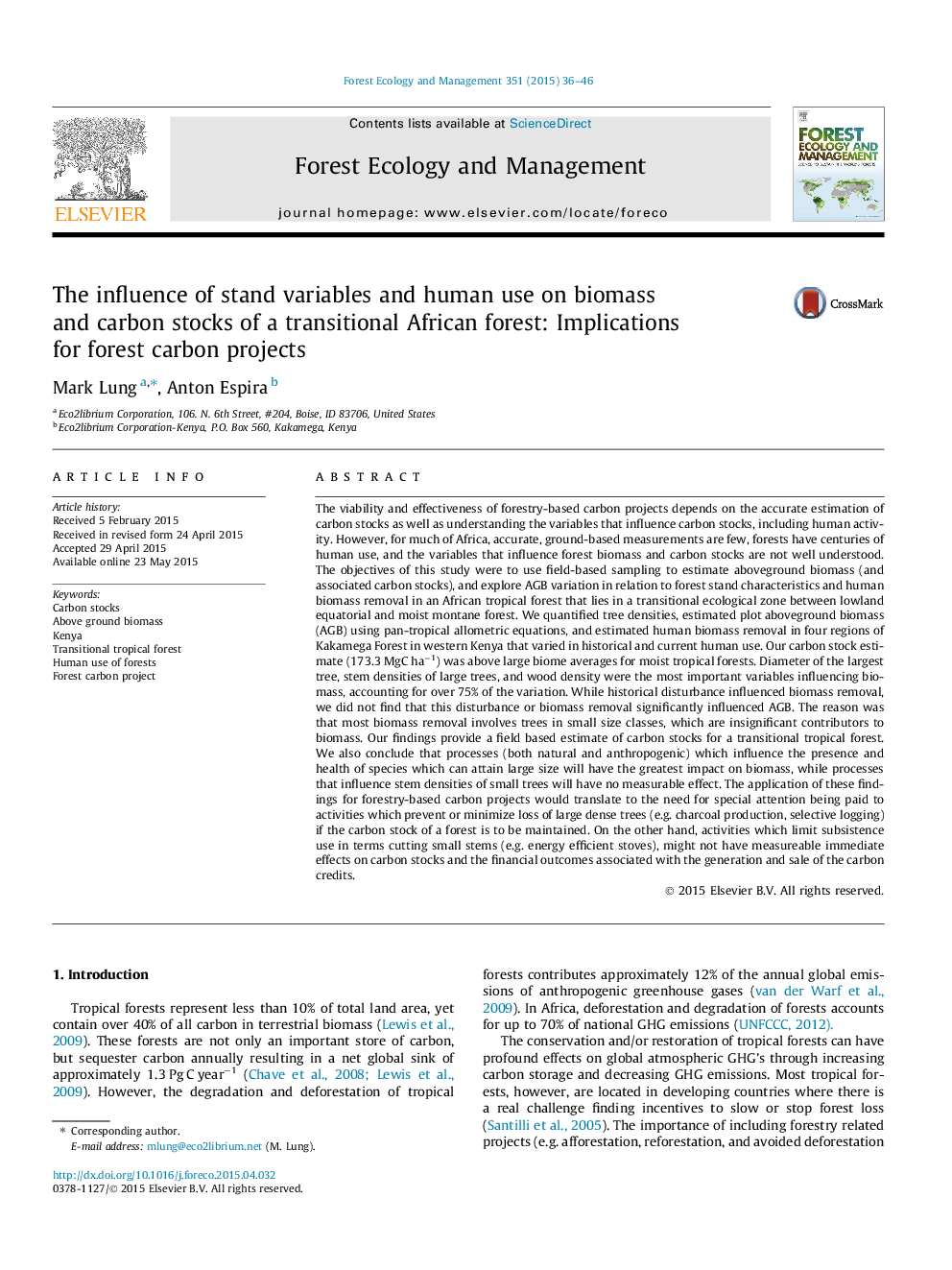| کد مقاله | کد نشریه | سال انتشار | مقاله انگلیسی | نسخه تمام متن |
|---|---|---|---|---|
| 86125 | 159167 | 2015 | 11 صفحه PDF | دانلود رایگان |
• Carbon stocks for a transitional tropical forest estimated at 173 MgC ha−1.
• DBH of largest tree, wood density and densities of large trees best predict AGB.
• Disturbance history correlated with biomass removal but neither influence AGB.
• Implications of results for forest carbon projects highlighted.
The viability and effectiveness of forestry-based carbon projects depends on the accurate estimation of carbon stocks as well as understanding the variables that influence carbon stocks, including human activity. However, for much of Africa, accurate, ground-based measurements are few, forests have centuries of human use, and the variables that influence forest biomass and carbon stocks are not well understood. The objectives of this study were to use field-based sampling to estimate aboveground biomass (and associated carbon stocks), and explore AGB variation in relation to forest stand characteristics and human biomass removal in an African tropical forest that lies in a transitional ecological zone between lowland equatorial and moist montane forest. We quantified tree densities, estimated plot aboveground biomass (AGB) using pan-tropical allometric equations, and estimated human biomass removal in four regions of Kakamega Forest in western Kenya that varied in historical and current human use. Our carbon stock estimate (173.3 MgC ha−1) was above large biome averages for moist tropical forests. Diameter of the largest tree, stem densities of large trees, and wood density were the most important variables influencing biomass, accounting for over 75% of the variation. While historical disturbance influenced biomass removal, we did not find that this disturbance or biomass removal significantly influenced AGB. The reason was that most biomass removal involves trees in small size classes, which are insignificant contributors to biomass. Our findings provide a field based estimate of carbon stocks for a transitional tropical forest. We also conclude that processes (both natural and anthropogenic) which influence the presence and health of species which can attain large size will have the greatest impact on biomass, while processes that influence stem densities of small trees will have no measurable effect. The application of these findings for forestry-based carbon projects would translate to the need for special attention being paid to activities which prevent or minimize loss of large dense trees (e.g. charcoal production, selective logging) if the carbon stock of a forest is to be maintained. On the other hand, activities which limit subsistence use in terms cutting small stems (e.g. energy efficient stoves), might not have measureable immediate effects on carbon stocks and the financial outcomes associated with the generation and sale of the carbon credits.
Journal: Forest Ecology and Management - Volume 351, 1 September 2015, Pages 36–46
